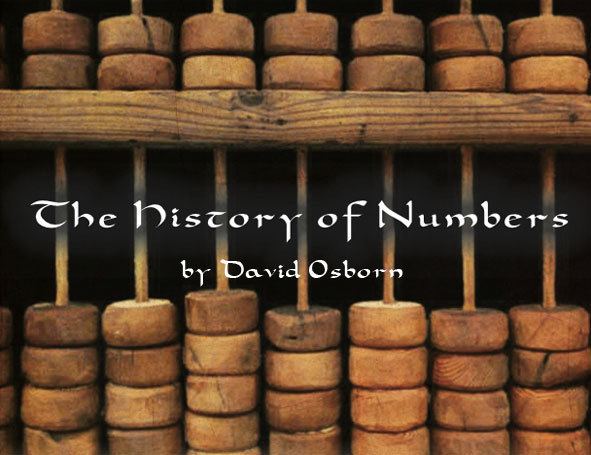 | ||
Math that makes you think origin of numbers
Counting
Numbers that answer the question "How many?" are 0, 1, 2, 3 and so on. These are
Contents
- Math that makes you think origin of numbers
- Counting
- Fractions and rational numbers
- Incommensurable magnitudes in geometry and irrational numbers
- Negative numbers
- Zero
- One
- e
- Numeral systems
- References
cardinal numbers. When used to indicate position in a sequence they are ordinal numbers.
To the Pythagoreans and Greek mathematician Euclid, the numbers were 2, 3, 4, 5, . . . Euclid did not consider 1 to be a number.
Fractions and rational numbers
Numbers like
Incommensurable magnitudes in geometry and irrational numbers
In the fifth century BC, one of the ancient Pythagoreans showed that some quantities arising in geometry, including the length of the diagonal of a square, when the unit of measurement is the length of the side of the square, cannot be expressed as rational numbers. If the side of a square were divided into five segments of equal lengths, and if the length of the diagonal of the square were equal to that of exactly seven such short segments (which is in fact a reasonable approximation, but not exact), then those short segments would be what Euclid called a "common measure" of the side and the diagonal. What we today would consider a proof that a number is irrational Euclid called a proof that two lengths arising in geometry have no common measure, or are "incommensurable". Euclid included proofs of incommensurability of lengths arising in geometry in his Elements.
Negative numbers
In the Rhind Mathematical Papyrus, a pair of legs walking forward marked addition, and walking away subtraction. They were the first known civilization to use negative numbers.
Negative numbers came into widespread use as a result of their utility in accounting. They were used by late medieval Italian bankers.
Zero
By 1740 BC, the Egyptians had a symbol for zero in accounting texts. In Maya civilization zero was a numeral with a shell shape as a symbol, with the plastron uppermost).
One
The ancient Egyptians represented all fractions (with the exception of 2/3) in terms of sums of fractions with numerator 1 and distinct denominators. For example, 2/5 = 1/3 + 1/15. Such representations are popularly known as Egyptian Fractions or Unit Fractions.
π
The earliest written approximations of π are found in Egypt and Babylon, both within one percent of the true value. In Babylon, a clay tablet dated 1900–1600 BC has a geometrical statement that, by implication, treats π as 25/8 = 3.1250. In Egypt, the Rhind Papyrus, dated around 1650 BC but copied from a document dated to 1850 BC, has a formula for the area of a circle that treats π as (16/9)2 ≈ 3.1605.
Astronomical calculations in the Shatapatha Brahmana (ca. 4th century BC) use a fractional approximation of 339/108 ≈ 3.139 (an accuracy of 9×10−4). Other Indian sources by about 150 BC treat π as √10 ≈ 3.1622
e
The first references to the constant e were published in 1618 in the table of an appendix of a work on logarithms by John Napier. However, this did not contain the constant itself, but simply a list of logarithms calculated from the constant. It is assumed that the table was written by William Oughtred. The discovery of the constant itself is credited to Jacob Bernoulli, who attempted to find the value of the following expression (which is in fact e):
The first known use of the constant, represented by the letter b, was in correspondence from Gottfried Leibniz to Christiaan Huygens in 1690 and 1691. Leonhard Euler introduced the letter e as the base for natural logarithms, writing in a letter to Christian Goldbach of 25 November 1731. Euler started to use the letter e for the constant in 1727 or 1728, in an unpublished paper on explosive forces in cannons, and the first appearance of e in a publication was Euler's Mechanica (1736). While in the subsequent years some researchers used the letter c, e was more common and eventually became the standard.
Numeral systems
The first numeral system known is Babylonian numeric system, that has a 60 base, it was introduced in 3100 B.C. and is the first Positional numeral system known.
The first known system with place value was the Mesopotamian base 60 system (ca. 3400 BC) and the earliest known base 10 system dates to 3100 BC in Egypt.
Roman numerals evolved primitives system of cutting notches. It was once believed that they came from alphabetic symbols or from pictographs, but these theories have been disproved.
